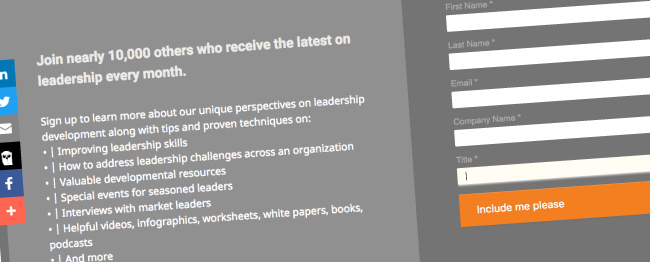Producing, managing and deploying effective email marketing campaigns is one of the many tactics required for success with Content Marketing. And while email list management may not be sexy, it’s important stuff if you’re serious about getting the most value from your Content Marketing investment.
In this post we’re going to share how to:
- | Practice list quality management
- | Effectively add new contacts/leads/customers to your house list
- | Integrate a new, supplementary list to grow the size of your house list

Is your domain healthy?
Of the many goals in Email Marketing, one of the most important is protecting the health of the domain associated with the emails that you send to customers, prospects, and leads. Think of domain health as the quality of the internet recognizability of the digital IP address of your domain.
Protecting your domain’s health is accomplished by actively measuring and monitoring two very important pieces of data.
1. | Bounce Rate
It’s essential to keep the bounce rate of emails associated with your domain as low as possible. We like to use .5% as a target rate.
And if you are using one of the major Marketing Automation platforms like Marketo, Pardot, SharpSpring or Hubspot, it’s important to remember that you are NOT sending personal, one-to-one emails from your desktop mail app to customers, prospects or leads.
This is accomplished through a Marketing Automation platform acting as an ESP or Email Service Provider. This is one of the essential technologies integrated into a robust Marketing Automation platform.
Some solutions rely on their custom-built technology or leverage their relationships with dedicated partner specialists to actually execute the send of email content. That’s the important content that either you develop and create or an agency or some other qualified resource does for you.
2. | Low Spam complaints
It’s critical that you do everything possible to ensure that SPAM complaints from your email marketing campaigns are minuscule. We like to use .1% as a safe target rate.
Only email recipients can report SPAM. And if a SPAM complaint is reported to Google or other Internet monitoring authorities, this can have a very negative impact on the domain authority of the sending domain (IP) that is connected to the content.
If there are a lot of SPAM complaints about your emails, it can result in a “black listing” of your domain. This would virtually ensure that no one would receive an email sent through a Marketing Automation platform or an ESP. The high cost and time required to restore a domain’s authority if it has been blacklisted should be enough incentive to prevent this from ever happening.
Bigger is not necessarily better.
It’s counter-intuitive of CRM thinking that the size of a list of contacts, leads, and customers is the most important metric. But with Content Marketing and Marketing Automation, the quality of the list is more important than the size.
For example, if you’re sending email content to lots of people who don’t want it, and they’re annoyed enough to identify our content as SPAM, you’re doing everyone a disservice. Or worse, you’re potentially putting your domain at significant risk.
One of the best ways to mitigate this risk it to automatically confirm with all customers, contacts, and leads who populate a form on your website that they actually want to receive content from you via marketing automation email.
When a site visitor fills out and submits a form, the email that they automatically receive requires them to click a prominent button that acknowledges that they, in fact, do WANT to subscribe to and receive your content. This meets the double-opt-in compliance requirement that validates with certainty that you are not pushing spam to them. In addition, providing the opportunity for every contact, lead or customer to unsubscribe with every email sent by a third party is required by law.

List addition volume + velocity affect deliverability.
You need to measure and monitor the volume and velocity of additions that you make to your House Email list. This measurement is driven by the size of your existing list and the number of new additions made on a monthly basis.
For example, if you’re current email House List is about 10,000 contacts, leads, and customers, you can safely add at least 275 new contacts a month. That means if ALL 275 new email names hard bounce and are undeliverable due to incorrect or outdated email addresses, you won’t trigger a steep percentage rise in your bounced email rate. This spike in a bounce rate can put your domain in question from incoming email servers.
The result is that if an incoming mail server remotely suspects that a domain (IP) is sending unrecognized mail or SPAM, it’s going to block incoming email. If that happens, your email and content will never get to a lead, customer or contact’s desktop or mobile email application.
A sharp increase in a bounce rate can also get you recognized and diminished in the eyes of Google, Apple, Microsoft, and other primary email platforms. These major email app providers work 24/7/365 to increase their capabilities to detect SPAM before it ever gets to an intended recipient’s email inbox.
So if you don’t play nice and meet their continually changing requirements of SPAM detection, you could end up with a sharp increase in your bounce rate and your email will never get to the people you want to reach.
Adding new contacts, leads and customers done right.
If you want to manually add new contacts, leads, and customers to an email House List, it’s best to do it with a structured process and a verifiable method.
First, as SharpSpring Email Delivery Specialist Tim Pogge recommends, avoid purchasing lists to grow your email house list. This post outlines the many reasons why and much more.
 “One of the best ways to put your domain at risk is to purchase a third-party list and send email to it.”
“One of the best ways to put your domain at risk is to purchase a third-party list and send email to it.”Tim Pogge | Email Delivery Specialist | SharpSpring
We prefer to have our clients populate a custom spreadsheet with new contacts or leads. It’s critical that every new contact or lead has a legitimate and current email address. Without this, a contact, lead or customer is not worth adding to your email House List because you won’t be able to communicate with them.
In addition, it’s a good idea to assign every contact, lead or customer to a salesperson on your team. You can always switch this down the road. But from the get-go, you should assign responsibility to someone on your team to measure and monitor the status of each person on your list so that they can eventually turn them into new or recurring revenue.
You can populate and complete your spreadsheet at the end of every month. Then integrate the new data into your Marketing Automation platform and merge it with your House List. We like adding the date right in the title of the new list that you are merging. That way, it’s easy to locate and identify the list if there are any segmentation or data impact issues to address down the road.
How to add a new, large group.
If you plan to manually integrate a new large group of contacts, leads or customers into your house list, you also need a plan and process to accomplish that successfully. This also assumes that you stay within the list growth boundaries outlined above to minimize your hard bounce rate.
-
- | Write a 3-4 sentence personal 1-to-1 email asking list members to subscribe to your content
- | Send the email Blind-CC to all email names on the list
- | This email becomes a “first filter” of the quality of email addresses
- | Any undeliverable addresses will bounce + you will be notified via your desktop mail app that the mail could NOT be delivered
- | The email should include a link to a subscription conversion page
- | Email content should reflect the benefits of subscribing
- | Subscription benefits should also be clear on your landing + conversion page

Avoid list housekeeping at your peril.
Most email House Lists are divided into 2 basic groups:
- Those that are receiving email content and engaging with it to some degree
- Those that never open email, convert on any content or who have not explicitly become a subscriber
It’s important to start weaning the people out of your House List that never engages as they can pull your email performance measurement and analytics down. To mitigate this, it makes sense to “re-engage” these people by reaching out to them in a manner and method described above in the Adding new contacts, leads and customers done right section of this post.
Or you can send a dedicated email through your Marketing Automation platform. However, you should not expect great results, as you already know that this group is not engaging with email content that you are already delivering to them.
Improving performance results never stops.
As anyone engaged in email marketing, as part of a structured Content Marketing program will attest, improving email marketing results never stops. The data proves that email marketing continues to deliver the highest performance at the lowest cost of any online marketing tactic.
Practicing good email list management housekeeping does require a bit of continuous work. But abandoning it in search of some other online marketing panacea is probably not a great idea.
Instead, it makes more sense to keep the faith and keep at it. Just recognize that you need to follow proven best-practices to succeed. Or at least have a qualified partner that you can work with to guide you through the challenges that email marketing creates.
And you? How are you faring with your email marketing campaigns and tactics? Share your results with our community.
As president and creative director of TeamworksCom, Paul develops brand strategy, engineers content to express customer value and creates integrated online and content marketing solutions to help businesses succeed. Connect with Paul, send an Email, or just call 415.789.5830.

[…] Email Marketing […]